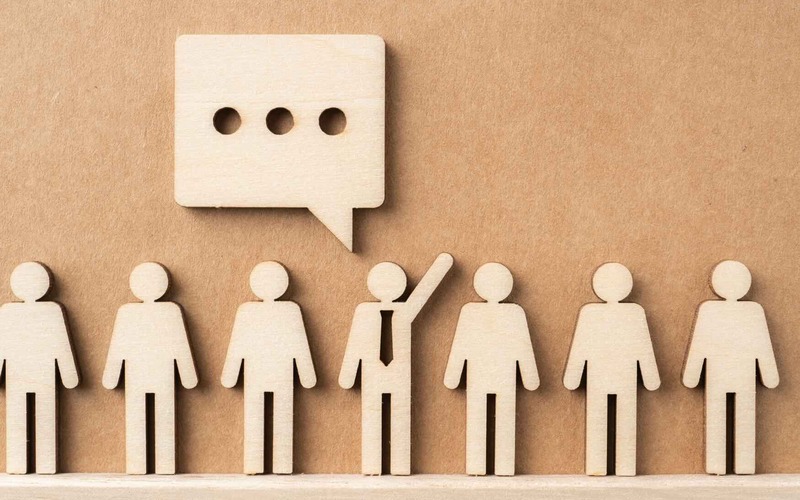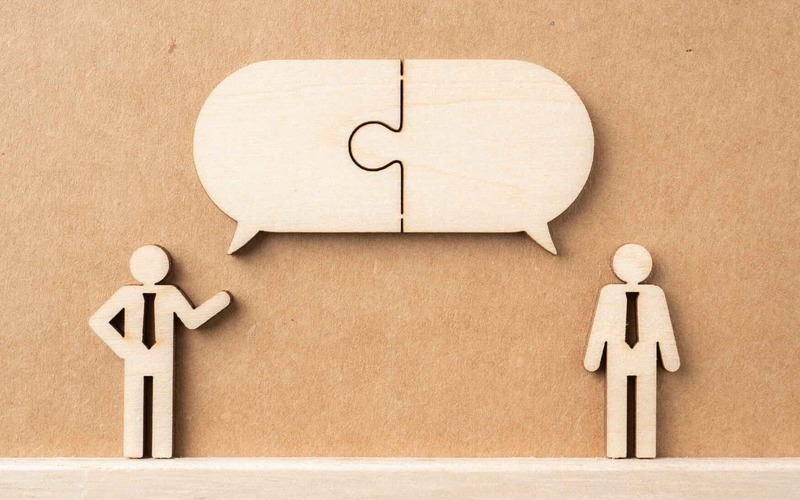Effective Communication

Effective communication is essential to building strong relationships and getting important projects done. Communication not only promotes collaboration, it also produces better results. Effective communication is more than just exchanging information. Because, all too often, it goes wrong. We say one thing, the other hears something else. This creates misunderstandings, frustrations and conflicts.
Here are 6 simple tips that you can use today to brush up your communication skills.
First of all, it is important to avoid a number of pitfalls. These two stumbling blocks are a damper to effective communication:
Stress and out-of-control emotions
When you are stressed or emotionally overwhelmed, you are more likely to misinterpret other people, send confusing signals or lapse into negative behavior patterns. To avoid conflict and misunderstanding, it is fundamental that you enter the conversation with the necessary calmness and composure. Are you under stress or feeling the emotions rising? Then postpone the conversation and schedule it for a later time.
Lack of focus
This is also a major obstacle. This is because you cannot communicate effectively if you are multitasking. It is absolutely not a good idea to secretly check your phone during a conversation, keep half an eye on your mailbox or already think of your answer while the other is still talking. Undoubtedly you will miss non-verbal signals in the conversation and therefore misunderstandings can arise. If you want to communicate effectively, eliminate all distractions and focus only on the conversation.
Are you ready to communicate in a balanced and focused way? These 6 tips will help you to ensure successful and effective communication.
1: Listen with attention and commitment
When we communicate with others, we often focus on what we want to say ourselves. Effective communication, however, is less about talking and more about listening. Listening well means not only understanding the content being communicated, but also understanding the underlying emotions or intentions. In fact, most conflicts are the result of poor listening.
There is a big difference between engaged listening and simply hearing. If you really listen - if you are involved in what is being said - then you hear the subtle nuances that help you interpret the message correctly. As an engaged listener, you not only understand the other person better, you also make the other person feel heard and understood, which can help build a stronger and deeper understanding and connection.
Some tips for becoming an engaged listener
Avoid interrupting the other person or changing the topic of the conversation. Whatever comes to mind, let the other person finish speaking. When you interrupt, you signal that what the other person is saying is not important.
Try to set aside your judgment. To communicate effectively with someone, it is not necessary to agree with that person's ideas, values or opinions. But it is important to set aside your judgment in order to truly understand this person.
2: Communicate face-to-face whenever possible
Many companies arre using email as their primary method of communication. Electronic communication seems so simple but it actually can make things more complicated, especially if the message is complex or sensitive. How many times have you sent an email to a colleague or customer that was misunderstood? If you know that more than half of the impact in communication comes from nonverbal cues such as body language and facial expression, then you understand that face-to-face communication is preferable. To improve your professional communication, it's a good idea to pick up the phone occasionally, schedule a video call, or set up a live meeting when you have something important to say.
The way you look, listen, move and respond to another person says more than words ever can. Nonverbal communication, or body language, includes facial expressions, body movements and gestures, eye contact, body posture, the tone of your voice, and even your muscle tone and breathing.
Developing the ability to understand and use nonverbal communication will help you connect better with others, express more accurately what you mean, help you navigate through difficult situations, and build better relationships.
3: Ask questions
Asking questions not only shows that you have listened, but also confirms that you have understood the other person. You can also use questions to gather additional information and better understand the conversation. Asking the right question is at the heart of effective communication. You can ask open-ended questions (which begin with who, what, why, how, when...) or closed-ended questions (yes/no questions).
Open-ended questions are good for developing a conversation, to learn more about the details or to probe for the other's opinion or point of view. For example, "What is your opinion about the new customer system?"
Closed questions are ideal for directing the conversation, concluding a discussion or making a decision: "Now that we know the facts, do we all agree that this is the right way to proceed?"
Asking open-ended questions is a good way to fire up the conversation. A misplaced closed question can kill the conversation and lead to uncomfortable silences. So it's best to avoid this when a conversation is in full swing.
4. Don't make assumptions
One of the biggest barriers to good communication at work is missed signals and assumptions. Drawing conclusions and making assumptions too quickly is accepting something as true without really knowing whether it is true. You start filling in the blanks, as it were, and that can go very wrong.
Of course, it is convenient if the truth fits into one's own thinking and it is often easier to assume than to check the facts. It is also comfortable because any debate is avoided and it is also often done unconsciously. And so it is a trap, a trap we easily fall into. So if you are in doubt about something, or it is unclear, ask for more clarity or check the facts.
5. Feel what the preferred style of the other is
Different personalities mean different communication styles, and nowhere is this more evident than in the workplace. A clash of communication styles happens quickly, whether it's a manager and co-worker or two colleagues working together on a project.
Think about the people in your own workplace. Do you sometimes find it difficult to talk to your boss or a particular colleague? Do you feel like you are not on the same page? Or that they don't really understand you?
A clash of communication styles can not only affect productivity, but can also cause frustration and conflict. Understanding that everyone is different is fundamental to effective communication. The better we understand the people around us, the more effective we can become as leaders, managers and colleagues.
6. Give constructive feedback
If your colleague is doing a task well, tell him or her so. Giving positive feedback is a great way to improve communication in the workplace.
A great tip to start with? Point out opportunities for growth, not mistakes
Start with your intent, why you think it's important to share this feedback and how you are willing to help the other person.
Discuss behavior, impact and action
Constructive feedback describes the impact of a specific behavior. It does not focus on personality or perceived intent. It might sound like this, "You didn't submit your project on time (behavior), and we had to postpone our team meeting (impact). Next time, let me know you'll be late so we can plan it better (action)." Result? Less hurt feelings.
Show respect and stay objective
Choose your words carefully so your coworker doesn't get defensive. Use "I" messages, such as "I've noticed" or "I'm worried about," rather than "you" messages, such as "You're always late" or "You never think about others". Keep your emotions out of it, as they can derail your message.
Armed with these tips you will truly have more impact with your communication.
More information: Communication Skills









